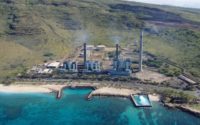The Environmental Protection Agency expects to develop a management plan for chemicals affecting drinking and groundwater that were widely used for fire fighting, waterproofing and stain prevention following a summit held May 22-23 with state leaders. Others say, however, that the agency must first establish a maximum contaminant standard for the substances under the Clean Water Act.
In 2016 EPA issued a lifetime health advisory of 70 parts per thousand (ppt) for two chemicals in the per- and polyfluoroalkyl group, PFOA and PFOS, but the guidance is not an enforceable drinking water standard. More recent studies have shown that a lower tolerance, possibly as low as 12 ppt, is a more accurate level for safety. The Defense Dept. says it cannot determine its cleanup requirements without an enforceable cleanup standard.
“For almost 20 year, the EPA has been dragging its feet on regulating PFAS chemicals despite reams of evidence that they are hazardous at very low doses,” says Ken Cook, president of the Environmental Working Group. The chemicals have been linked to several types of cancer, thyroid disease and weakened childhood immunity.
A firestorm broke out recently when emails obtained by Politico showed that EPA, the Defense Dept. and the White House wanted to delay or block an assessment by a division of Center for Disease Control that identified a significantly lower safe rate of the chemicals in drinking water because it would create a “public relations nightmare,” and the impact to EPA and DOD will be “extremely painful.”
Lawmakers including Rep. Mike Turner, R-Ohio, chairman of the House Armed Services Subcommittee on Tactical Air and Land Forces, have called for the immediate release of the assessment. “This is not an issue of public relations, this is an issue of public health and safety,” Turner said in a letter dated May 15 to EPA Administrator Scott Pruitt.
The CDC did not respond to a request as to when the Agency for Toxic Substances and Disease Registry plans to publish its latest assessment of the safety of the chemicals. The assessment gives the daily exposure to a hazardous substance that is likely to be without harmful health effects.
In 2011 DOD issued a risk alert for one of the products containing the chemicals, aqueous film forming foam (AFFF), a highly efficient fire suppressant used by the military since the 1970s to fight petroleum fires.
In March, Maureen Sullivan, Deputy Secretary of Defense for environment safety and health, released a report to the House Armed Services committee that showed in August 2017 DOD had identified 401 active base realignment and closure installations that had at least one area with a known or suspected release of the chemicals.
Drinking water contamination was found at 36 systems on active military bases and 90 off-base systems that supplied water to active bases. It also found 1,621 groundwater wells that tested above EPA’s lifetime health advisory. DOD is conducting further studies on groundwater.
EPA’s Pruitt said after the May summit on PFAS chemicals, agency officials will travel to states with communities affected by PFAS to determine how it can best support the work being done at the state, local and tribal levels. But DOD’s Sullivan said without a cleanup standard the department can not determine its requirements. “EPA must go through the process to establish a maximum contaminant level under the Safe Drinking Water Act,” she said.






Post a comment to this article
Report Abusive Comment